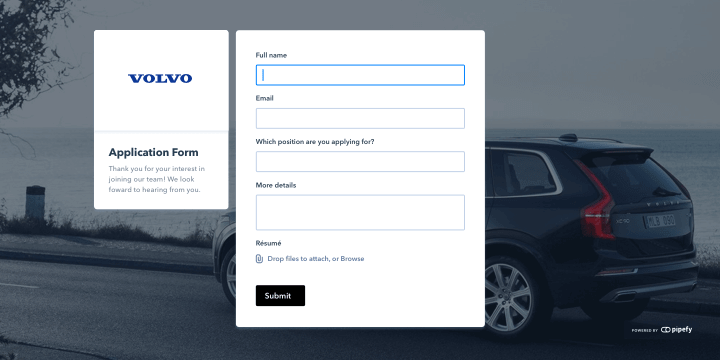ARTICLE SUMMARY
Pipefy comes with many features to help boost your processes and your team's productivity, helping them make the best out of their time and resources.

Not only is Pipefy the best – and easiest – way to manage your company’s processes. It also comes with many useful features to help boost your processes and your team’s productivity, helping them make the best out of their time and resources.
Pipefy’s many features help ensure that you and your team have all necessary resources for managing all your processes: from sales and marketing to IT and HR.
It doesn’t matter the type of the process, as long as it consists in a series of actions leading to a particular result, Pipefy can help improve it. Let Pipefy simplify the way you manage your processes.
Process Integration
As no man is an island, no process exists independently of many other supporting processes. If only there was an easy and simple way to integrate two or more processes.
Well, ain’t today your lucky day? Pipefy offers you the possibility of doing just that with a feature called Pipe Connections. This feature allows you to boost your processes by connecting and determining rules for your processes, such as the ones in this example:
- You run two interdependent processes: Sales Pipeline and Accounts Receivable;
- Every time a card reaches is in the Negotiation phase on the Sales Pipeline you want to establish a rule that a new connected card must be created on the Accounts Receivable pipe, so that your financial team can bill the customer;
- You also want to ensure that each connected card created on Accounts Receivable must be done before the ‘parent’ card on the Sales Pipeline Pipe can be moved to “won”.
Sounds simple, right? Well, to us, it is. Using Pipe Connections you can create a ‘bridge’ between two pipes while establishing conditions for both processes.
Learn more about what are Pipe Connections and how to set them up on our knowledge base.
Email Automation
Considering the same example we were using before, let’s suppose that, every time the invoice is sent to the customer and paid, your financial department would like to send sales an automated message letting them know what’s happening to their request.
You can do that using another Pipefy feature called Email Templates, a feature that allows you to boost your processes by saving time – and money!
This feature allows you to create pre-designed email templates to be sent manually – or automatically every time a card enters/leaves a phase. It also allows you to use dynamic content so you won’t need to type the recipients email or the number of the invoice on each email you send.
Back to the example:
- When creating the connected card on the Accounts Receivable pipe, the sales executive responsible for this customer will provide information regarding the sale, such as total value, customer ID, etc.
- That information can be used to identify the invoice and the status of the request using automated emails with dynamic content.
Learn all about email templates and how to set them up here.
Public Form
Let’s look at an entirely different example now, ok? Let’s suppose you run your Expense Reimbursement process on Pipefy.
Even though you don’t need all your team members to access Pipefy – or even access the Pipe due to sensitive information – they must all be able to easily create new reimbursement requests.
With Pipefy’s Public Form feature you can boost your processes by making any pipe’s start form “public”, either sharing its public URL or embedding it on a page.
This feature allows anyone outside of Pipefy to create new cards requesting reimbursements. You can even use email automation as mentioned above to let them know their reimbursement request has been received and when it’s already been processed.
Learn more about how to make your start form public here.
Information Database
Sticking to the expense reimbursement example, wouldn’t it be really practical if you had a database with all your employee’s information (such as name, email, department, etc.) so they don’t need to fill up all this information every time they open a new request?
Wouldn’t it be even more practical if this feature allowed you to list all reimbursement requests a certain employee has opened just by clicking his/her name on a list? Well, with Pipefy’s database feature, it’s more than possible.
This feature allows you to create information tables that can be related to one or more Pipes. Not only does it make it a lot more practical to fill in repeated information, you can also use each of your database records to see all related pipes and cards (thus listing the reimbursement requests).
Learn more about the ways you can use Pipefy’s database here.
App Integration
I’m pretty sure you’re almost convinced Pipefy’s the best thing that’s ever happened to you team and it’s surely the best way to boost your processes, if only it came with specific features XYZ…
Well, Pipefy was developed to offer you a foundation for managing all your company’s processes in a single platform but, if there’s a certain specific feature you’re looking for that can only be found in a CRM or Helpdesk specific tool, don’t worry!
Through Zapier, Pipefy allows you to integrate your processes with over 500 webapps without any technical expertise whatsoever.
We want what’s best for your processes and your team’s productivity and, if we don’t offer a specific feature, we’ll do our best to integrate with an app that does.
Learn more about all the ways you can integrate Pipefy with other apps here.







